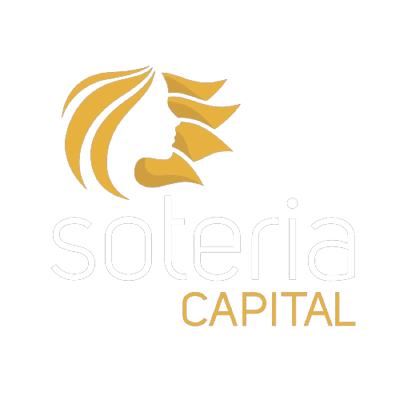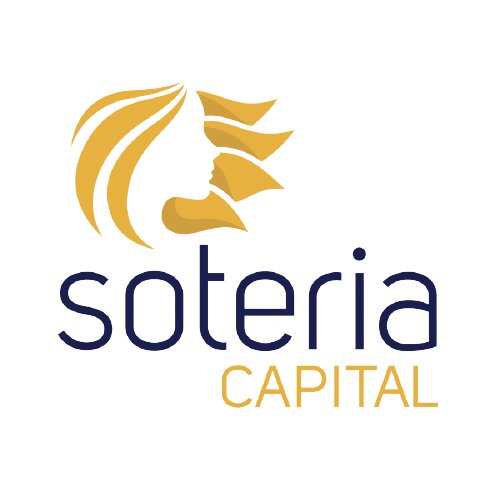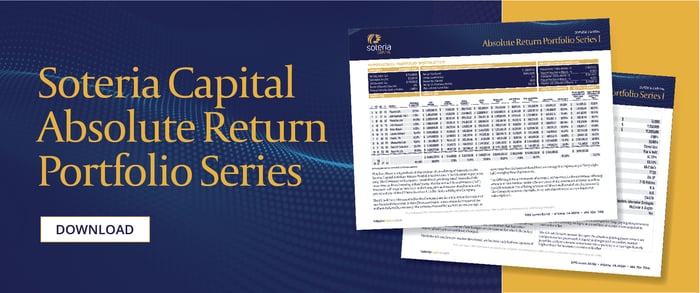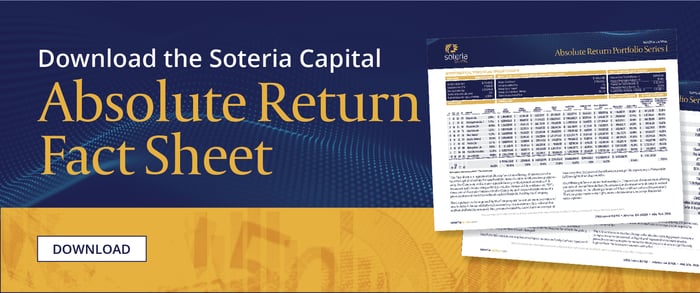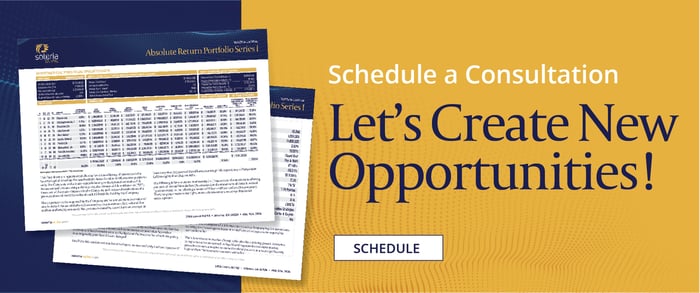The Soteria Difference
The Soteria Capital Absolute Return Portfolio Series is based on the premise that every investor dollar should be treated the same way. The only profit margin to be realized from a life settlement is derived by optimizing the spread between the investor’s cost basis and the face amount of the policy paid out directly to the investor at each policy maturity. This Private-Equity style of Direct-Pay ownership maximizes the economic value of the investor’s asset.
Depending on an investor’s level of capital commitment, he/she is buying a fixed share of equity in a defined portfolio that cannot be diluted. The investor’s pro-rata share of the portfolio is dollar-weighted to the face amount of the portfolio. In other words, if a portfolio of life settlement policies creates a 65% blended Yield-to-Maturity (YTM), then for $1 invested (Cost Basis), the purchaser will receive $1.65 (Cost Basis + YTM) at portfolio maturity regardless of the equity level in the portfolio.
To be clear, in the Soteria Model, the investor receives individual payments as each policy in the portfolio matures…not in one lump sum after all the policies mature. In other words, if a portfolio has 10 policies in it, the investor will receive 10 individual, variably timed liquidity events.
Active management does not provide any appreciable probability of meeting performance expectations
The real value Soteria strives to bring is in policy underwriting due diligence and constantly trying to remove costs to increase value to the investor. The Soteria model is a low-cost, buy-and-hold, illiquid until maturity investment. In our opinion, active management does not provide any appreciable probability of meeting performance expectations.
Human longevity is certainly affected by the presence of certain health impairments but that’s not a guarantee of premature mortality. And there’s no way to factor in randomness. Accidents happen all the time and otherwise healthy people pass away unexpectedly. The only sure thing in the life settlement proposition is that we will all lose against the march of time and impaired health conditions generally do not improve that proposition.
There are important differences between open-end and closed-end Life Settlement Funds
There are any number of funds in this universe to choose from but there are some very notable differences between their structures that investors should understand before making a decision to or not to invest and with whom.
There are two types of fractional life settlement funds represented in the market: Open-End and Closed-End funds.
The Soteria Absolute Return Portfolio Series is a closed-end structure. We prefer not to be labeled as a “Fund.” The term fund implies an active management style and that the talent and track record associated with a manager denotes some sort of esoteric benefit. We firmly believe that any manager in the life settlement space that boasts that they can pick which policies are more likely to perform than others is telling a tall tale.
Although open-end funds may offer more liquidity, they typically have lower returns
Open-end funds offer more liquidity than closed-end funds but that’s where the value seems to end. Open-end funds typically have lower returns. Open-end funds charge management and performance fees based on the net asset value of the fund. This is where there is an opportunity for an open-end fund to inflate returns on paper in order to show a track record of success.
This “Mark-to-Myth” valuation style self-serves more to justify management fees than it functions to accurately reflect the investor’s realized gain. It’s hard if not impossible to accurately assess a life settlement portfolio’s value with unknown maturity dates and uneven cashflows.

As Registered Investment Advisors (RIAs) look to alternative asset classes to provide portfolio diversification and attractive yield in today’s High-Price-Earnings (P/E) Ratio, High-Bond-Yield markets, they are increasingly looking for alternative investments like Senior Life Settlements that exhibit low correlations to equity and real estate markets, to reduce risk in a rising interest rate cycle and source investment options for their clients that preserve purchasing power in an inflationary economy.
It’s hard if not impossible to accurately assess a life settlement portfolio’s value
The life settlement space is largely ruled by private funds that operate under the Reg D Exemption and raise funds exclusively from accredited investors and not public markets.
The open-end life settlement fund presents these key problems for investors:
1. A life settlement investment takes a few years to generate positive cashflows
The early cycle returns of a new fund are low. Since it takes a few years for a new life settlement portfolio to yield positive cash flows, a fund that continues to purchase new policies every year essentially restarts the low-yield part of the investment process. This hurts investors who want to exit early unless the fund inflates the value of the underlying assets to boost returns.
2. Open-end funds can hide low early-cycle returns by booking the policy at the asking price instead of the bid price in order to show high unrealized returns
As long as the fund keeps buying new policies, it can continue to show high unrealized paper returns by repeating this process while having low actual realized returns.
3. If an investor exits the fund before cashflows turn positive, they only realize the low early-cycle fund returns
That is true unless the fund has overvalued its assets, in which case the low early-cycle fund returns would be passed on to investors who exit later. To make matters worse, any new investor who gets lucky and invests in an open-end life settlement fund just before the large positive cashflows materialize will experience great returns that would have otherwise gone to the investors who had been there since the beginning, as illustrated in the table below.

As the above table shows, an investor expecting to earn a 9% compound annual return would need to stay for the entire five-year period since the returns are low in the early years and high in the later years. If the investor exits before year four, they earn only a 4% compound annual return.
An open-end fund with low early cycle returns and high-mid to late-cycle returns benefits later investors who invest just before the large cashflows materialize at the expense of those who invested from the beginning. New investors that come in only during the later years essentially dilute the original investors’ equity.
Asset classes with unlevel cashflows are better suited to closed-end funds
Furthermore, if the fund continues to buy new life-settlement assets with the capital raised from new investors, the fund is essentially restarting the “low-return” part of the investment profile. This lowers short-term returns for all investors in the fund. The longer the fund continues to buy new assets, the longer they delay the “high-return” part of the return profile.
This is why asset classes with unlevel cashflows are better suited to closed-end funds where investors have a longer time horizon and can wait for the cashflows to materialize as opposed to open-end funds that need to provide liquidity for investors. Investors who exit early will miss out on the high cashflows in the later years.
While an open-end fund offers better liquidity for those wanting early exit options, there’s a premium paid for this in the form of lower returns. A fund that faces redemption requests needs to hold a larger cash reserve to meet those demands or must use leverage. Furthermore, if large numbers of investors choose to redeem, an open-end fund has to sell assets to meet those redemptions. This can significantly hurt returns if the asset has a large bid/ask spread.
Consider an asset that has a bid of 90 and an ask of 100. Imagine the fund is valuing those assets on its book at the $100 asking price because it expects to keep the asset for the long term. Let’s assume the fund receives a redemption request for $100 and has to sell assets to meet the redemption request. It cannot simply sell $100 of assets to meet the cash redemption because the bid price is $90. To meet the $100 cash redemption by selling assets at the bid price it has to sell assets worth $111.11 on its books ($100 cash redemption = $111.11 of booked assets X $90 bid price/$100 ask price). This sell-off of assets hurts the investors who remain invested long-term due to the loss of value.
A more nefarious problem arises when the value of the assets being held on the books is subjective and can be manipulated
Open-end funds that invest in assets with large bid/ask spreads must either hold large cash reserves to meet these redemption requests or sell assets at below the value on their books, either of which drags down returns. These funds could also book the assets at lower values to reduce this liquidation problem, but that would result in the fund showing lower returns to their investors and consequently, reducing the amount of capital the fund can raise and of course, reducing the manager’s fees.
A more nefarious problem arises when the value of the assets being held on the books is subjective and can be manipulated. Consider an open-end fund that values its assets based on third-party reports. If the fund uses third-party providers or practices that allow it to inflate the value of the asset greater than what buyers are willing to pay for it, then the fund can show great paper returns every time it purchases new assets.
Let’s go back to our example of an asset with a $90 bid price and a $100 asking price. Let’s assume a fund can buy the asset at around $92. Now let’s assume that it uses a third-party provider or practice that allows it to value the asset at $105 – which is greater than the asking price. This means the fund can purchase the asset at $92 and immediately value it on its books at $105 – a $13 gain which amounts to a 14.1% immediate paper gain. Even if the fund had no other gains for the remainder of the year, it would still be able to post a 14.1% return for the year.
Let’s assume that the open-end fund posts a 14.1% return for the year and is able to attract more investors in year two based on the strong performance in year 1. Let’s say in year 2 the open-end fund raises $184. Once again, the bid/ask spread of the assets is at $90/$100. But this year, they’re able to buy twice as many assets at the $92 price and book it at a $105 price for another 14.1% gain. In years three and four they use this same strategy again but with an even greater amount of assets. In year five, the fund finally writes down the value of its assets to bring it more in line with the current market value.

We can quickly see how this poses a problem. By continuing to play this valuation game, small funds can become large funds by raising increasing amounts of capital using impressive unrealized paper returns while generating minimal realized returns for investors. If investors ever decide to redeem, funds that use this valuation tactic will have to sell assets at well below their booked value thereby generating losses for the fund.
A common feature of illiquid assets is that price expectations of sellers and buyers do not match. These wide spreads result in non-functioning markets. While there are many reasons for this to happen, often this is due to the assets being over-valued by pricing models using stale or overoptimistic input values. Some market participants benignly call this valuation approach “Mark-to-Model.” Actually, “Mark-to-Myth” is probably more descriptive of the practice. The Soteria Capital Absolute Return Portfolio Series is a more democratized platform to own this important alternative asset class.
Subscribe to the Soteria Blog
The Soteria Blog is a short weekly editorial commentary about how life settlements can affect investing and risk management in the current economic and geopolitical environment.
